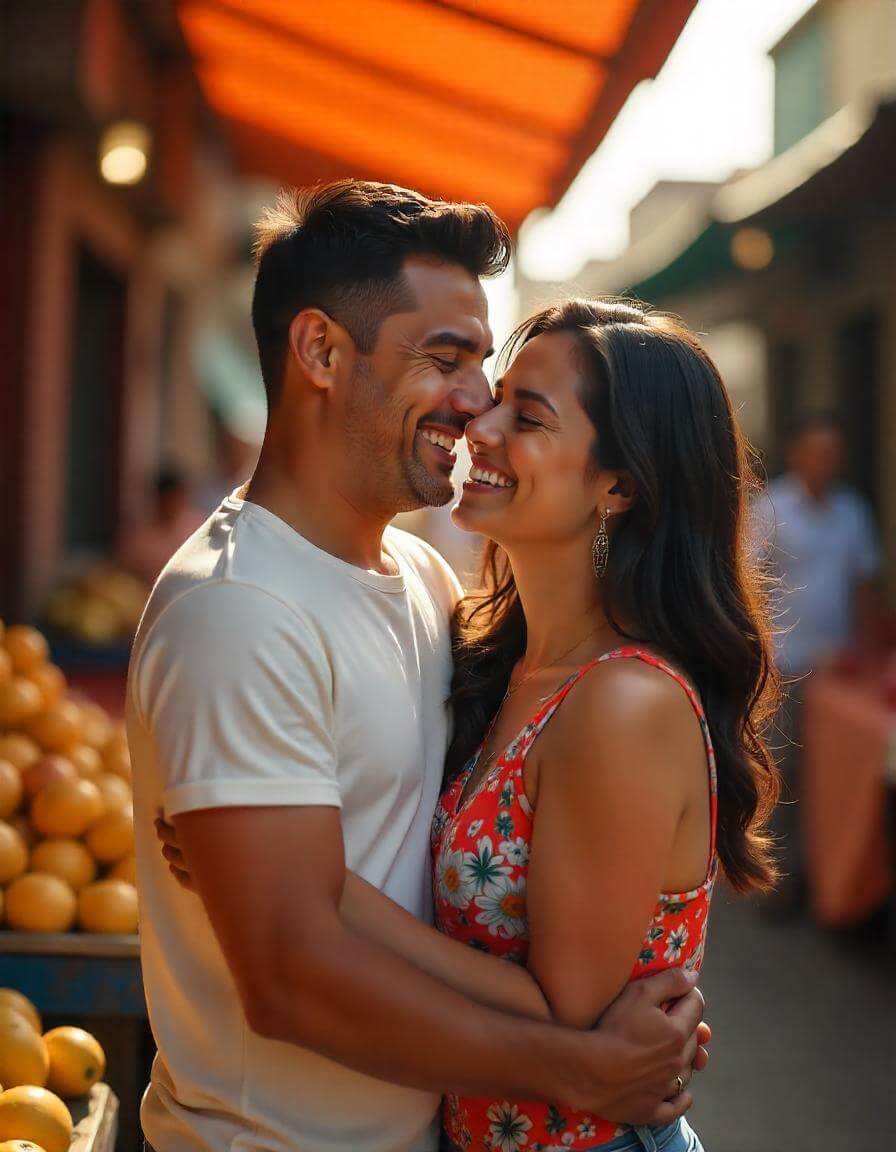Hugs have long been a universal form of nonverbal communication that express care, comfort, and connection. In our modern society, many find solace in the power of physical contact through hugs. As we explore different types of hugs, we find that each one conveys its own message. For instance, one popular type of hug can speak volumes about reassurance, and another type of hug can instantly brighten a gloomy day. The variety of hugging styles reflects the complexity of human relationships and emotions. With deep-rooted traditions and cultural nuances, different types of hugs not only enhance our bonds but also reveal a subtle language of empathy and support.
This guide delves into the world of hugs, examining each variation carefully. We discuss the invigorating energy of a warm embrace and the soothing solace of a heartfelt squeeze. Every hug, whether firm or gentle, carries its own distinct meaning that often goes unspoken yet resonates with both giver and receiver. The careful study of this subject enlightens us about how physical gestures form the basis of connection. Each embrace can hold a special meaning that goes beyond words, encapsulating comfort, joy, and mutual understanding.
In this article, we will explore various instances of affection, ranging from a tight hug to the comforting reassurance found in a classic hug. Our in‐depth examination covers the art of hugging and its significance, highlighting the many ways that our bodies communicate love and security. This exploration is especially important as our relationships evolve and change over a long time. With genuine care and insightful observations, we celebrate the power and purpose of hugs in everyday life.
The Significance of a Tight Hug
Hugs have an extraordinary ability to convey warmth and reassurance, and among these, a tight hug is especially effective. A tight hug wraps the receiver in comfort, evoking memories of secure moments spent with close friends or family. This embrace delivers a message that transcends words, leaving little room for doubt in its meaning. Every tight hug can brighten even the darkest mood. Indeed, a tight hug often reflects an intimate connection that suggests that hearts are aligned heart to heart.
A tight hug is frequently chosen by those who want to provide immediate support and a sense of security. When someone offers a tight hug, it is as if their arms around the other person convey that they will be there no matter what happens. In this moment, the receiver may feel the intensity of the affection that comes from a truly loving embrace. When the embrace is so enveloping that it nearly renders bodies may touch in an almost imperceptible yet deeply personal manner, the tight hug transforms into a silent promise of care.
The physical sensation of a tight hug is known to lower stress levels and spark a feeling of euphoria. It also reminds us how quick gestures can have long-lasting impacts. Additionally, the word tight is a simple yet powerful descriptor when describing these caring gestures, reinforcing the strength of the connection. In times of joy or sorrow, the act of giving or receiving a tight hug communicates that no one is alone. This embrace establishes a moment where physical contact is full of supportive meaning and emotional relief.
Embracing with a Classic Hug and the Bear Hug Variants
Among the various forms of affectionate embraces, the classic hug has remained a timeless symbol of care and connection. This gentle yet sincere expression is ideal for sharing warmth with close friends and family. In contrast, the bear hug takes the embrace to a different level. Often, when emotions run high, one might offer a bear hug that envelops the other person in such a way that their arms around one another provide assurance and comfort. Indeed, the impact of a bear hug is profound and enduring.
In some moments, receiving a tight bear hug can be a memorable experience that signifies more than just physical contact. It represents a culmination of trust and the willingness to be vulnerable, forging a connection that speaks eye to eye and heart to heart. The intensity conveyed by a bear hug resonates emotionally, making it a cherished form of communication. Furthermore, a bear hug often expresses the desire to provide a safe haven, especially when challenges arise, ensuring that both parties know they are supported.
The variation between a classic hug and a bear hug lies in their intensity. While the classic hug is typically reserved for gentle comfort, the bear hug is a bolder expression of deep emotional support. Regardless of the form, both embrace styles deliver undeniable meaning. In today’s fast-paced world, these simple gestures remind us of the timeless value of human connection, helping us reconnect on a heart to heart level. Whether celebrated among family or shared with close friends, the reassuring impact of a bear hug continues to endure.
Quick Hugs and Warm Embraces
For those moments when time is short but feelings are genuine, a quick hug offers instant comfort and reassurance. A quick hug may not last long, but its fleeting nature makes it all the more precious. Often experienced between close friends or even strangers in passing, the quick hug encapsulates a moment of affection that speaks volumes. In some situations, quick hugs can bridge the gap between distance and separation, ensuring that even brief physical contact carries significant meaning.
The spontaneity of a quick hug sets it apart from longer, more deliberate embraces. This brief contact is an excellent example of how hugs provide a rapid yet powerful emotional lift. There is a particular charm in the immediacy of a quick hug, as it often conveys an unspoken understanding between both parties. In a world where time is precious, a quick hug stands as a reminder that sometimes even the briefest of moments can establish strong connections.
It is noteworthy that every quick hug bears its own narrative. While one may experience quick hugs during a busy day, each brief encounter still leaves a trace of meaning that lingers in memory. This type of embrace signifies a deliberate yet brief expression of care. Also, the single word quick embodies the speed and efficiency of this gesture, ensuring that every moment shared is full of heartfelt expression without delay. In conclusion, a quick hug provides an immediate sense of unity and support, making it an essential part of our daily expressions of affection.
Experiencing a Quick Distant Hug
In some cases, the constraints of time or circumstance result in a modified form of embrace. One such variation is a quick distant hug. This special gesture, although not as close as other forms, manages to convey warmth and understanding despite the physical separation. A quick distant hug serves as an innovative expression when circumstances do not allow for the usual full embrace, yet the sentiment behind the action remains powerful and filled with meaning.
The experience of a quick distant hug is particularly relevant in situations where individuals need to maintain a small space while still expressing care. Sometimes in crowded environments or during specific cultural practices, a quick distant hug is a respectful and considerate way to greet someone while ensuring personal boundaries. In this context, the word distant appears to highlight the unique characteristics of this embrace, differentiating it from more intimate forms of hugs.
Even though the hug is not as enveloping as others, the gesture maintains its emotional potency. The interaction still supports the notion that hugs can communicate solace and camaraderie in various forms. Often, the memory of a quick distant hug can lead to feelings of being cherished, as it suggests that even when apart, one’s presence is dearly felt. The act carries a nuanced meaning that reminds people that physical space does not hinder emotional closeness and support.
Understanding Side Hug Experiences
Among the various expressions of affection, the side hug carries its own distinctive charm. A side hug is typically used in settings where a full embrace may not be practical or expected, yet a warm connection is desired. The side hug can often be seen between close friends or colleagues who share an unspoken understanding. This form of greeting is relaxed and non-intrusive, yet it still delivers heartfelt meaning and fosters a sense of unity.
The appeal of the side hug lies in its simplicity. Often, when circumstances call for a less overwhelming gesture, a side hug is a perfect choice. By keeping the embrace to one side, both people maintain comfort while sharing mutual care. In several instances, a side hug can serve as a subtle introduction to more intimate interactions, as the physical proximity allows bodies may touch in a gentle, respectful manner. Throughout social gatherings, the side hug is consistently used to express that friends and family are united in spirit even when their arms around one another differ from a complete wrap-around embrace.
The recurring use of the side hug in varied settings illustrates its versatility. Many cherish the side hug because it balances personal space with a genuine show of affection. In fact, the side hug can be both casual and affectionate, demonstrating that even small gestures can carry substantial meaning. Repeated instances of the side hug remind us that emotional support is not limited to the most overt forms of hugs, but may be found in these understated yet affirming gestures. As such, the side hug continues to be a favored choice among those looking to convey warmth without overstepping boundaries.
Exploring Different Types of Hugs and Their Meanings
Examining the varied landscape of affection, we now consider different types of hugs that enrich our communication. Each embrace carries a message that is unique, illuminating the essence of connection in personal relationships. When evaluating these behaviors, one quickly sees that every type of hug has a distinct meaning. This section shows how each style of hug tells its own story. Every different type of hug helps us understand how people show affection.
Some people like a gentle squeeze. Others prefer a stronger, tighter embrace. It depends on the moment. One type of hug might comfort someone in sorrow. Another may celebrate joy and success. A simple hug can carry deep meaning, even without words.
When we think about hugs and their meanings, we see how even the shortest hug can give strength. It shows support, love, and unity.
This variety of hugs is important. It helps us see that every hug is a unique way to communicate. Some prefer a warm, secure tight hug. Others share care with quick, unplanned hugs. Each one means something different.
Understanding these hug styles shows how physical affection can speak louder than words. It reminds us that every form of hugs brings us closer. Each type of contact helps build love and trust in our lives.
Body Language: Eye to Eye, Heart to Heart
The silent conversation between two people often takes place eye to eye and heart to heart. In the realm of physical affection, the simple act of a hug opens channels of communication that go beyond spoken language. Whether it’s a fleeting glance or an intentional, warm embrace, being eye to eye adds intimacy to the experience. These moments bridge the gap between emotion and expression, creating strong bonds instantly.
When partners interact heart to heart, they share more than mere physical contact—they exchange trust and warmth that redefine comfort. This heart to heart connection is a vital part of many hugs, as it encapsulates empathy and emotional honesty. The symbolic nature of the hug becomes even more powerful when individuals lock eyes eye to eye, allowing them to sense each other’s feelings without saying a word. Frequently, those interactions leave both parties with a deep sense of reassurance and meaning that is nearly palpable.
Interactions that progress from being eye to eye to a full embrace often embody a profound meaning beyond the surface. When conversations happen heart to heart, the sentiment behind each squeeze and gesture becomes enriched. In many instances, heart to heart contact during hugs has the power to heal, bringing individuals closer together even in times of strain. This interplay between visual and physical cues stands as a testament to the innate human capacity to communicate care without the need for elaborate words.
The Role of Arms: Guidance with Arms Around, Arm Around, and One Arm
A key element of any hug is the way our limbs contribute to creating a space of warmth and security. When friends and loved ones share hugs, the positioning of their arms plays an essential role. For example, when arms around someone, the embrace becomes more intimate and supportive. In many heartfelt encounters, individuals position their arms around each other to show solidarity and care. A close friend might gently place one arm on your shoulder. It’s a quiet way to show care. The rest of the hug adds warmth and meaning.
Sometimes, just putting an arm around someone says a lot. When both people have their arms around each other, it creates a strong bond. It’s a feeling that’s hard to explain. Resting one arm around a close friend shows trust. It says, “I’m here for you.” Phrases like “my arms are around you” bring comfort. They invite closeness and support.
Every part of a hug matters. Arms around someone make the hug feel deeper. A soft squeeze on the shoulder with an arm around shows care. It sends a clear message of love and empathy. Every hug becomes a special act of kindness. It speaks to our need for connection and warmth.
Relationship Dynamics and Body Touching Expressions
The dynamics of relationships are often enriched by subtle cues of physical body touching and affectionate gestures. It is in these moments that hugs reveal their deeper meaning. In close-knit circles, such as among close friends or long-term partners, a warm embrace can solidify bonds and provide solace during a long time of uncertainty. Often, a spontaneous body touching interaction serves as a reminder that love transcends physical distance.
In many encounters, the simple act of sharing a hug becomes an unspoken dialogue where the notion of bodies may touch respectfully, yet meaningfully. Embraces in this setting can involve a deliberate, caring placement such as a specific type of hug that strengthens the connection. In some cases, a particular type of hug might be reserved for moments when mutual support is paramount. For instance, one individual might initiate a type of hug that reflects understanding while offering another a chance to regain balance in a challenging moment.
Throughout relationships, the duration of these interactions varies. Sometimes, a hug lasts just a long time enough to affirm that care is shared. Other moments hold on for a long time as two people find comfort in each other’s presence. In this interplay, being with close friends in such an exchange highlights how meaningful physical contact can be. Occasionally, couples may share a type of hug that is unique to their history—a silent language that renders body touching a statement of loyalty. In these scenarios, the transformative power of a hug is undeniable, establishing a closeness that lingers for a long time.
In fact, another type of hug might echo throughout intimate circles, where every gentle squeeze speaks to the core meaning of unity and care. Moreover, a final type of hug may reinforce that not only do close friends share memories, but they also share a commitment that is continuously renewed with every gentle body touching gesture.
Conclusion
In conclusion, hugs speak louder than words. A tight hug, classic hug, or quick hug all carry special meanings. A bear hug or even a tight bear hug can show deep emotions. A quick distant hug may seem brief, but it still gives comfort.
We explored different types of hugs and what they mean. Each type of hug tells a story. Even a side hug between close friends creates a heart to heart bond. These hugs show real feelings and help us feel closer.
From standing eye to eye to wrapping arms around each other, hugs become memories. Each embrace has its own message. A hug can heal, comfort, or simply show love.
The power of hugs is their silent message. A tight hug offers warmth. A quick hug still makes us feel seen. These moments stay with us for a long time.
Every hug, planned or spontaneous, means something. It reminds us we’re not alone. A gentle arm around someone can say more than words. Body touching in a kind way connects us. These small moments can turn into lifelong memories.













